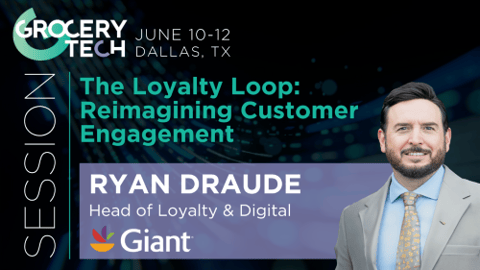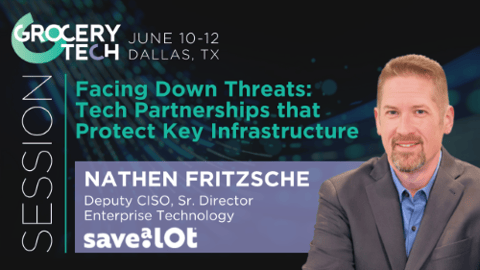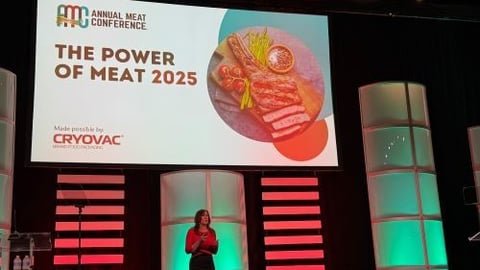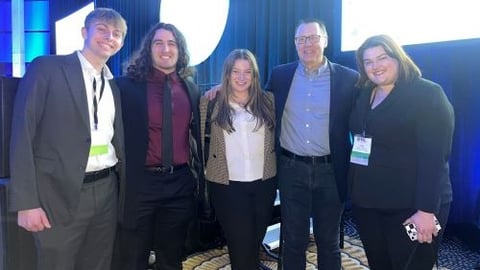How Total Store Operations Is Taking Flight
Progressive Grocer was on the ground in Austin, Texas, from March 20 through April 2, as industry leaders came together and set their sights on the future of total store operations. At the recent Altitude 2025 event hosted by SaaS solutions provider Upshop, grocery professionals from across North America shared insights on their respective journeys to connect the many sides – and people – of their businesses.
As Upshop outlined and previewed its unified platform that covers functions such as fresh operations, food waste, inventory optimization, replenishment, e-commerce and more, and as retail leaders discussed how they are deploying relevant solutions, some common themes emerged.
[RELATED: Upshop Promotes 2 Execs]
Technology Drives Team Engagement and Empowerment
Although change is a constant in this industry, unified platforms can ultimately make work easier for associates and their managers and other grocery leaders.
Leah Perkins, VP, business planning and continuous improvement at Wegmans Foods Markets, noted in a change management session with Upshop CEO Shamus Hines how the retailer’s impetus for investing in production planning technology was actually centered on helping employees. “If you start with your people and focus on them first, all of those other measures take care of themselves,” she pointed out, highlighting results showing that the program has already led to sales increases, reduced shrink and enhanced employee engagement.
.Jackie Johnson, senior director of fresh item management at Wisconsin-based grocer Festival Foods, agreed, citing the ways that tech plays a key role in scaling fresh in a grocery organization, whether in platforms dedicated to platform planning, recipe management, computer-generated ordering or other elements. “We're very guest-focused, very associate-focused and culture-driven. We had to fulfill the obligation that we had for them to put a tool or tools in their toolbox to really to help them be successful” she remarked
Johnson continued, “The more rocks we kicked over, the more things we learned. We knew that in order for production planning to be successful, we had to really widen our scope to be able to say, ‘This is so interconnected with the decisions that we make and the operations that are within the stores, the assortment that each store has, and all of the connected pieces, that we would be really doing ourselves a disservice if we were to stand up production planning in a vacuum versus taking the scope way far out and say, ‘Let’s begin with the end in mind’.”
With that end in mind, she added, the fresh experience was crucial for execution among shoppers and associates alike. “We knew that for this to be successful, it had to be integrated within what our associates were doing. And it had to simplify. It couldn't add complexity and we couldn't layer more into what they were doing. We had to make it easier to achieve what we were expecting. This has been a big win, from the reactive state to really being proactive.”
No 1 Way to Communicate With Customers, Team Members – and That’s the Point
Many retailers have folded tech platforms into multi-pronged programs, to great effect.
Darrell Anhel, director, digital guest experience at Lowes Foods headquartered in North Carolina, talked about the effectiveness of digital coupons and online saving events such as its new “Big Digital” two-week campaign as a traffic driver and loyalty builder, working with Inmar as a provider. “For us, it's been driving that digital adoption, focusing on transactional penetration with the digital offer or coupon attached to it. From that, we're trying to drive units in the basket. So, basket growth is probably our No. 1 initiative through things like price perception and personalized offers,” he explained. That said, this is one tool in Lowes Foods’s omnichannel orchestration of offers that include in-store incentives and inspiration.
Added fellow panelist Jess Walker, senior director of product management at Inmar Intelligence, a Lowes partner and a preferred partner of Upshop: “We think that Lowes is one of those retailers very much leveraging all potential touch points with the consumer.”
Those touchpoints include in-store merchandising. “We are starting to build a story together with the digital offer. So, it's one thing to run a pot roast with the $2 off coupon, that's great, but now we’re carrying that also with potatoes that have a dollar-off coupon and we are building a wow display in the meat department that tells them the recipe story,” Anhel said.
Such multifaceted approaches that incorporate digital and physical programs extend to associate productivity and engagement, too. For example, grocery is one of the few industries in which five generations of employees can work together. That unique workforce was addressed by Pat Iannotti, director, retail operations at Price Chopper/Market 32, who addressed different and concurrent modes of communication.
“Is what I'm trying to communicate being received the way I want it to be received? Am I going to get the outcome that I'm looking for from this communication? Whether you're talking about Baby Boomers and Gen X, who may prefer in-person emails or on-the-job training, or you're talking about a Millennial or Gen Z, who may prefer electronic forms of communication like a text, electronic or any other type of digital communication, you've got to recognize that. A lot of times, anything that we're trying to communicate will go out in multiple mediums. It will go out in an email, it will go out with a QR code and it will go out with a text to certain teammates,” Iannotti reported.
Where AI Meets Information Priorities
A trio of c-suite tech execs, including Scott Kessler of Northeast Grocery, Inc., Graham Watkins of Giant Eagle, Inc. and Greg Zeh of Weis Markets, Inc., discussed how advances in AI coupled with real results in planning and operations, are transforming their businesses.
“ROI starts at the beginning, not at the end. I want a business leader to talk with their business partner about the why, not the how and the what. What business value are we trying to drive? Are we in agreement down to the level of whatever products we're talking about? And then we can start to talk about product selection and what's important in prioritization,” said Kessler, EVP, CIO, Northeast Grocery
Added Graham Watkins, Giant Eagle’s EVP, chief technology and supply chain officer: “We want to say that we don't work in silos as a company, but we still of course have silos. Every company does. One of the things we're trying to pay attention to is when a same request keeps coming from different silos, we need to be smart enough to see that and then say, ‘We really don't want to buy three of these things. We would like to buy one and solve against this problem.’ I think the greatest ROI benefits that we see in projects are not in any one silo, but in the light space between silos.”
A unified platform for total store operations connecting all of the dots is not only within reach, but is currently happening at different levels, Upshop’s leaders pointed out at the event. “This industry has to be running all the time. A big part of a conference like this is demonstrating how the vision is now real,” said Mike Weber, chief growth officer.
Echoed Hines: “Our data is connected and solutions are set and optimized with intelligence engaged. We are here to make businesses change for the better, but big change doesn’t mean big risk.”







